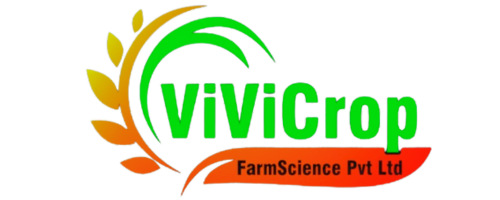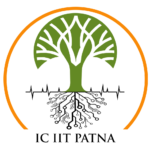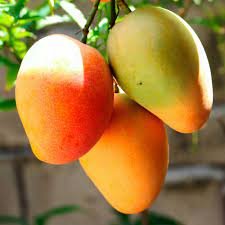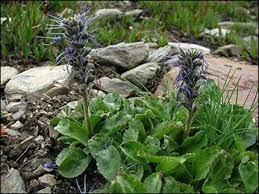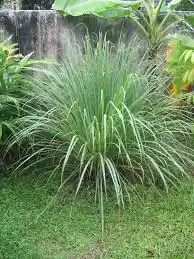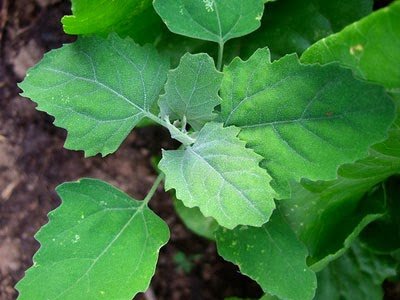Lemon Nutrition Requirements
Nutrition required by Lemon at each stage of its life cycle.
SOIL PREPARATION
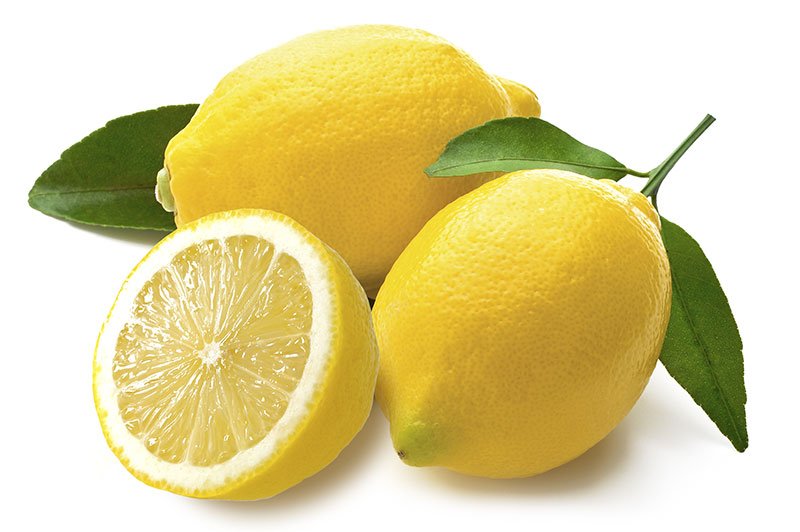
Soil Preparation
Soil preparation for lemon trees is crucial for establishing healthy growth and optimal fruit production. Here's a guide to soil preparation methods and the nutritional requirements at the soil preparation stage for lemon trees:
**Soil Preparation Method:**
1. **Site Selection:** Choose a site with well-draining soil and full sunlight exposure. Lemon trees prefer slightly acidic to neutral soil with a pH level between 5.5 and 6.5.
2. **Soil Testing:** Conduct a soil test to assess the soil's pH and nutrient levels. This will guide you in determining any necessary amendments for optimal tree growth.
3. **Clearing the Site:** Remove any weeds, rocks, or debris from the planting area. Clearing the site ensures that the lemon tree's roots have ample space to grow and expand.
4. **Digging the Planting Hole:** Dig a hole twice as wide and slightly deeper than the root ball of the lemon tree. Loosen the soil at the bottom of the hole to encourage root penetration.
5. **Amending the Soil:** Based on the soil test results, amend the soil as needed to achieve the optimal pH and nutrient levels for lemon tree growth. Common soil amendments include compost, well-rotted manure, and organic matter.
6. **Backfilling:** Place the lemon tree in the center of the planting hole, ensuring that the root ball sits level with the surrounding soil. Backfill the hole with the amended soil, gently firming it around the roots to remove any air pockets.
7. **Mulching:** Apply a layer of organic mulch, such as wood chips or bark, around the base of the lemon tree. Mulch helps retain soil moisture, suppresses weed growth, and regulates soil temperature.
8. **Watering:** Thoroughly water the newly planted lemon tree to settle the soil and ensure adequate moisture for root establishment. Keep the soil consistently moist, but not waterlogged, during the initial establishment period.
**Nutrition Requirements:**
1. **Nitrogen (N):** Nitrogen is essential for promoting healthy foliage growth and overall tree vigor. Lemon trees have moderate nitrogen requirements, especially during the early growth stages. Apply a balanced fertilizer with a higher nitrogen content (e.g., 10-10-10) according to package instructions.
2. **Phosphorus (P) and Potassium (K):** Phosphorus and potassium are important for root development, flowering, and fruit production in lemon trees. Use a fertilizer with a balanced NPK ratio to provide phosphorus and potassium, along with nitrogen.
3. **Calcium (Ca) and Magnesium (Mg):** Adequate levels of calcium and magnesium are essential for preventing nutrient deficiencies and promoting healthy fruit development. Incorporate dolomitic limestone into the soil to provide both calcium and magnesium.
4. **Micronutrients:** Lemon trees require various micronutrients for optimal growth and fruit production. Consider applying a micronutrient fertilizer or foliar spray containing zinc, iron, manganese, and copper to address any deficiencies.
5. **pH Adjustment:** Monitor soil pH regularly and adjust it if necessary to maintain the optimal range for lemon trees (pH 5.5 to 6.5). Use lime to raise pH in acidic soils or sulfur to lower pH in alkaline soils, following soil test recommendations.
By following these soil preparation methods and providing the necessary nutrients, you can create an optimal growing environment for lemon trees, ensuring healthy growth and abundant fruit production. Regular monitoring of soil conditions and tree health will help you adjust nutrient applications as needed to support ongoing tree vigor and productivity.
Early Growth (Germination to Establishment)

Early Growth
During the early growth stage (germination to establishment) of lemon trees, providing proper nutrition is crucial for promoting healthy root development, foliage growth, and overall plant vigor. Here are the key nutrition requirements for lemon trees during this stage:
1. **Nitrogen (N):** Nitrogen is essential for promoting vigorous vegetative growth, including leaf development and stem elongation, during the early growth stage. Adequate nitrogen availability encourages the formation of a strong root system, which is crucial for anchoring the tree and absorbing water and nutrients from the soil.
2. **Phosphorus (P):** Phosphorus plays a vital role in energy transfer processes within the plant, as well as root development and establishment. During the early growth stage, phosphorus helps stimulate root growth and supports the formation of new shoots and leaves.
3. **Potassium (K):** Potassium is important for overall plant health and stress tolerance, as well as root development and nutrient uptake. Adequate potassium levels promote strong root growth and help regulate water movement within the plant, ensuring proper hydration and nutrient distribution during the early growth stage.
4. **Calcium (Ca) and Magnesium (Mg):** Calcium and magnesium are essential secondary macronutrients that contribute to cell wall formation, enzyme activation, and overall plant structure. Adequate levels of calcium and magnesium support healthy root development and help prevent nutrient deficiencies and physiological disorders in lemon trees.
5. **Micronutrients:** Lemon trees require various micronutrients, including iron, manganese, zinc, copper, boron, and molybdenum, for optimal growth and development. These micronutrients play important roles in enzyme activation, photosynthesis, and nutrient metabolism. Ensure a balanced supply of micronutrients through soil amendments or foliar applications to prevent deficiencies and promote healthy growth during the early growth stage.
**Precautions:**
- Avoid excessive fertilization, as it can lead to nutrient imbalances, root burn, or salt buildup in the soil, which may hinder root development and overall plant growth.
- Monitor soil pH regularly and adjust it if necessary to maintain the optimal range for lemon trees (pH 5.5 to 6.5). pH extremes can affect nutrient availability and uptake by the roots.
- Provide adequate irrigation to ensure consistent soil moisture, as water stress can inhibit root growth and nutrient uptake in young lemon trees.
- Consider incorporating organic matter, such as compost or well-rotted manure, into the soil before planting to improve soil structure, fertility, and nutrient availability for young lemon trees.
By meeting the nutrition requirements and following these precautions during the early growth stage, you can promote healthy root development, vigorous foliage growth, and overall establishment of lemon trees, setting the foundation for future productivity and fruit production. Regular monitoring of plant health and nutrient status will help you adjust fertilizer applications as needed to support optimal growth and development.
Tillering Stage (Shoot Development)

Tillering Stage
The term "tillering" is more commonly associated with grasses and cereal crops, referring to the formation of side shoots or stems from the main stem. However, for lemon trees, a similar growth stage might be termed as "shoot development" or "early vegetative growth." During this stage, lemon trees focus on developing new shoots, leaves, and branches to establish a robust framework for future growth and fruit production. Here are the key nutrition requirements for lemon trees during the shoot development stage:
1. **Nitrogen (N):** Nitrogen is essential for promoting vigorous shoot growth and leaf development. It plays a crucial role in the formation of chlorophyll, the green pigment necessary for photosynthesis. Adequate nitrogen availability encourages the production of healthy, lush foliage, which is essential for maximizing photosynthetic activity and supporting overall tree growth.
2. **Phosphorus (P):** Phosphorus is vital for energy transfer processes within the plant, including the synthesis of ATP (adenosine triphosphate), the primary energy currency of cells. During shoot development, phosphorus promotes root growth, flower initiation, and overall plant vigor. It also plays a role in photosynthesis, nutrient uptake, and cell division.
3. **Potassium (K):** Potassium contributes to various physiological processes in lemon trees, including osmoregulation, enzyme activation, and stress tolerance. During shoot development, potassium helps regulate water movement within the plant, ensuring proper hydration and nutrient transport. It also enhances resistance to environmental stresses such as drought, disease, and pest attacks.
4. **Calcium (Ca) and Magnesium (Mg):** Calcium and magnesium are essential secondary macronutrients that contribute to cell wall formation, enzyme activation, and overall plant structure. Adequate levels of calcium and magnesium support healthy shoot development, root growth, and nutrient uptake. They also help prevent disorders such as blossom end rot and leaf tip burn.
5. **Micronutrients:** Lemon trees require various micronutrients, including iron, manganese, zinc, copper, boron, and molybdenum, for optimal growth and development. These micronutrients play essential roles in enzyme activation, photosynthesis, and nutrient metabolism. Ensure a balanced supply of micronutrients to prevent deficiencies and promote healthy shoot development.
**Precautions:**
- Monitor soil and tissue nutrient levels regularly to ensure that lemon trees receive adequate nutrition for optimal shoot development.
- Avoid excessive fertilization, as it can lead to nutrient imbalances, salt buildup, and environmental pollution. Follow recommended fertilizer rates based on soil tests and plant nutrient requirements.
- Provide supplemental irrigation during dry periods to maintain adequate soil moisture, as water stress can inhibit shoot growth and nutrient uptake.
- Incorporate organic matter, such as compost or well-rotted manure, into the soil to improve soil structure, fertility, and nutrient availability for lemon trees during shoot development.
By meeting the nutrition requirements and following these precautions during the shoot development stage, you can promote vigorous growth, lush foliage, and overall health in lemon trees, setting the stage for future flowering, fruiting, and productivity. Regular monitoring of plant health and nutrient status will help you adjust fertilizer applications as needed to support optimal shoot development and overall tree vigor.
Flowering

Flowering
During the flowering stage of lemon trees, proper nutrition is essential to support the development of healthy flowers, fruit set, and overall reproductive growth. Here are the key nutrition requirements for lemon trees during the flowering stage:
1. **Potassium (K):** Potassium plays a critical role in flower and fruit development in lemon trees. Adequate potassium levels support flower bud formation, pollen viability, and fruit set. Potassium also helps regulate water movement within the plant, ensuring proper hydration and nutrient transport to developing flowers.
2. **Phosphorus (P):** Phosphorus is essential for energy transfer processes within the plant, including flower and fruit development. Adequate phosphorus availability promotes strong root growth, which is crucial for supporting the increased nutrient demand during flowering and fruiting. Phosphorus also stimulates flower bud initiation and enhances flower quality.
3. **Calcium (Ca):** Calcium is essential for cell division, cell wall formation, and overall plant structure. Adequate calcium levels are critical during the flowering stage to support flower formation and prevent disorders such as blossom end rot. Calcium deficiency can lead to poor fruit set and development in lemon trees.
4. **Magnesium (Mg):** Magnesium is a component of chlorophyll, the green pigment responsible for photosynthesis. Adequate magnesium levels are essential for maximizing photosynthetic activity during the flowering stage, ensuring sufficient energy production for flower and fruit development. Magnesium deficiency can lead to chlorosis and reduced flower production.
5. **Boron (B):** Boron is a micronutrient that plays a crucial role in flower formation, pollen germination, and fruit set in lemon trees. Adequate boron levels are necessary for promoting flower bud differentiation and ensuring proper pollination and fertilization. Boron deficiency can result in poor fruit set and abnormal fruit development.
**Precautions:**
- Monitor soil and tissue nutrient levels regularly to ensure that lemon trees receive adequate nutrition for optimal flowering and fruit set.
- Avoid excessive nitrogen fertilization during the flowering stage, as it can promote vegetative growth at the expense of flower development.
- Provide supplemental irrigation during dry periods to maintain adequate soil moisture, as water stress can inhibit flower formation and fruit set.
- Incorporate organic matter, such as compost or well-rotted manure, into the soil to improve soil fertility and nutrient availability for lemon trees during the flowering stage.
By meeting the nutrition requirements and following these precautions during the flowering stage, you can promote healthy flower development, maximize fruit set, and enhance overall fruit quality in lemon trees. Regular monitoring of plant health and nutrient status will help you adjust fertilizer applications as needed to support optimal flowering and fruit production.
Matchuration & Ripening

Matchuration & Ripening
During the maturation and ripening stage of lemon fruit, proper nutrition is crucial to support the development of flavor, color, and overall fruit quality. Here are the key nutrition requirements for lemon trees during this stage:
1. **Potassium (K):** Potassium plays a vital role in fruit maturation and quality in lemon trees. Adequate potassium levels promote fruit enlargement, color development, and flavor enhancement. Potassium also helps regulate water movement within the fruit, ensuring proper hydration and nutrient transport during ripening.
2. **Calcium (Ca):** Calcium is essential for maintaining fruit firmness, cell wall integrity, and resistance to physiological disorders during storage. Adequate calcium levels are crucial for preventing disorders such as blossom end rot and fruit decay in lemon trees. Calcium deficiency can lead to poor fruit quality and storage losses.
3. **Magnesium (Mg):** Magnesium is involved in chlorophyll synthesis, enzyme activation, and carbohydrate metabolism in lemon trees. Adequate magnesium levels support photosynthesis, nutrient uptake, and overall fruit development. Magnesium deficiency can result in chlorosis, poor fruit quality, and reduced yields.
4. **Phosphorus (P) and Nitrogen (N):** Phosphorus and nitrogen are important for maintaining overall plant health and supporting fruit maturation and ripening processes. Adequate phosphorus and nitrogen availability during the maturation and ripening stage ensure sufficient energy and nutrient supply for fruit development and quality enhancement.
5. **Boron (B):** Boron is a micronutrient that plays a crucial role in fruit set, development, and quality in lemon trees. Adequate boron levels are necessary for promoting fruit enlargement, seed development, and sugar accumulation. Boron deficiency can lead to poor fruit set, abnormal fruit development, and reduced fruit quality.
**Precautions:**
- Monitor soil and tissue nutrient levels regularly to ensure that lemon trees receive adequate nutrition for optimal fruit maturation and ripening.
- Avoid excessive nitrogen fertilization during the maturation and ripening stage, as it can delay fruit ripening and decrease fruit quality.
- Provide supplemental irrigation during dry periods to maintain adequate soil moisture, as water stress can affect fruit development and quality.
- Incorporate organic matter, such as compost or well-rotted manure, into the soil to improve soil fertility and nutrient availability for lemon trees during fruit maturation and ripening.
By meeting the nutrition requirements and following these precautions during the maturation and ripening stage, you can promote the development of high-quality, flavorful lemons with excellent color, texture, and juiciness. Regular monitoring of plant health and nutrient status will help you adjust fertilizer applications as needed to support optimal fruit maturation and ripening.
Harvesting

Harvesting
During the harvesting stage for lemon trees, proper nutrition management and harvesting procedures are essential to ensure fruit quality, yield, and overall tree health. Here are the key aspects to consider:
**Nutrition Requirement:**
1. **Potassium (K):** Adequate potassium levels are crucial during the harvesting stage to support fruit quality, flavor, and shelf life. Potassium promotes fruit enlargement, color development, and resistance to physiological disorders. Ensure that potassium levels in the soil are sufficient to meet the tree's needs during fruit development and harvesting.
2. **Calcium (Ca):** Calcium plays a vital role in maintaining fruit firmness, reducing post-harvest decay, and enhancing shelf life. Adequate calcium levels are essential during the harvesting stage to prevent disorders such as blossom end rot and fruit decay. Consider applying calcium-rich foliar sprays or soil amendments to ensure proper calcium availability for fruit quality maintenance.
3. **Magnesium (Mg):** Magnesium is involved in chlorophyll synthesis, enzyme activation, and carbohydrate metabolism in lemon trees. Adequate magnesium levels support fruit development, coloration, and quality. Monitor magnesium levels in the soil and foliage and apply magnesium fertilizers if deficiency symptoms are observed.
4. **Nitrogen (N) and Phosphorus (P):** While nitrogen and phosphorus are not as critical during the harvesting stage as they are during earlier growth stages, maintaining adequate levels of these nutrients supports overall tree health and vigor. Avoid excessive nitrogen fertilization during the harvesting stage to prevent delays in fruit ripening and post-harvest issues.
**Harvesting Procedure:**
1. **Timing:** Harvest lemons when they reach the desired size, color, and maturity stage. The optimal harvesting time varies depending on the lemon variety and intended use (e.g., fresh consumption, processing). For fresh market lemons, harvest when the fruit reaches full size and develops a uniform yellow color with smooth skin texture.
2. **Harvesting Technique:** Use sharp pruning shears or clippers to cut the lemons from the tree, leaving a short stem attached to the fruit. Avoid pulling or twisting the fruit, as this can damage the tree and reduce fruit quality. Handle harvested lemons gently to minimize bruising or skin damage.
3. **Storage:** Store harvested lemons in a cool, dry place with good air circulation to prolong shelf life and maintain fruit quality. Avoid stacking or piling lemons on top of each other, as this can lead to bruising and decay. Consider using proper packaging materials, such as ventilated crates or boxes, to protect the fruit during storage and transportation.
4. **Post-Harvest Care:** Inspect harvested lemons for any signs of damage, disease, or decay. Remove and discard any damaged or diseased fruit to prevent the spread of pathogens. Rinse the lemons with clean water before storage or further processing to remove any dirt or debris.
By ensuring proper nutrition management and following appropriate harvesting procedures, you can maximize the quality, yield, and post-harvest longevity of lemon fruit. Regular monitoring of tree health and fruit maturity will help you determine the optimal timing for harvesting and ensure the best possible fruit quality.
Lemon Farming Economics
Get details of Profitability and cost estimate in growing Lemon per acres of Land.
SOIL PREPARATION

Soil Preparation
Soil preparation is crucial for successful bottle gourd cultivation, as it lays the foundation for healthy plant growth and high yields. Here's a guide on the soil preparation method and nutrition requirements at the soil preparation stage for bottle gourd:
### Soil Preparation Method:
1. **Site Selection**:
- Choose a well-drained site with plenty of sunlight for planting bottle gourd. Avoid areas prone to waterlogging or flooding.
2. **Soil Testing**:
- Conduct a soil test to determine the pH and nutrient levels of the soil. Bottle gourd thrives in slightly acidic to neutral soil with a pH range of 6.0 to 7.0.
3. **Clearing and Tilling**:
- Clear the planting area of weeds, rocks, and debris. Use a tiller or hoe to break up the soil and create a fine, crumbly seedbed.
4. **Amendments**:
- Based on the soil test results, amend the soil with organic matter such as compost, well-rotted manure, or leaf mold to improve soil structure, fertility, and moisture retention.
5. **Fertilization**:
- Incorporate balanced fertilizers or organic fertilizers into the soil according to the recommended rates for bottle gourd cultivation. A general guideline is to apply 1 to 2 pounds of nitrogen, phosphorus, and potassium (NPK) fertilizer per 100 square feet of planting area.
6. **Bed Preparation**:
- Create raised beds or mounds to improve drainage and prevent waterlogging. Ensure that the beds are well-compacted and leveled for uniform planting and irrigation.
7. **Mulching**:
- Apply a layer of organic mulch such as straw, hay, or shredded leaves to the soil surface to suppress weed growth, conserve soil moisture, and regulate soil temperature.
8. **Final Bed Preparation**:
- Rake the soil surface to create a smooth, level planting bed. Make shallow furrows or planting holes spaced according to the recommended planting distance for bottle gourd.
### Nutrition Requirements:
During the soil preparation stage, bottle gourd has specific nutrition requirements to support healthy plant growth and development. Here are the key nutrients needed:
1. **Nitrogen (N)**:
- Nitrogen is essential for promoting vigorous vegetative growth and overall plant health. Incorporate nitrogen-rich fertilizers or organic amendments into the soil to provide a steady supply of nitrogen for bottle gourd plants.
2. **Phosphorus (P)**:
- Phosphorus is important for root development, flowering, and fruit set in bottle gourd plants. Apply phosphorus-rich fertilizers or bone meal to the soil to support strong root growth and overall plant vigor.
3. **Potassium (K)**:
- Potassium plays a crucial role in plant metabolism, water regulation, and fruit development. Ensure adequate potassium levels in the soil by applying potassium-rich fertilizers such as potassium sulfate or potassium chloride.
4. **Calcium (Ca)**:
- Calcium contributes to cell wall formation, fruit quality, and disease resistance in bottle gourd plants. Incorporate calcium sources such as gypsum or lime into the soil to prevent calcium-related disorders and support healthy plant growth.
5. **Magnesium (Mg)**:
- Magnesium is a component of chlorophyll and essential for photosynthesis and enzyme activation in bottle gourd plants. Ensure sufficient magnesium levels in the soil by applying magnesium sulfate (Epsom salt) or other magnesium-containing fertilizers.
6. **Micronutrients**:
- Micronutrients such as iron, manganese, zinc, copper, boron, and molybdenum are required in small amounts but are crucial for various physiological processes in bottle gourd plants. Monitor soil micronutrient levels and apply micronutrient fertilizers or foliar sprays as needed to prevent deficiencies.
By following these soil preparation methods and addressing the specific nutrition requirements of bottle gourd plants, you can create an optimal growing environment for healthy plant growth and high yields. Regular soil testing and monitoring of plant health will help ensure that nutrient requirements are met throughout the growing season.
Early Growth (Germination to Establishment)

Early Growth
During the early growth stage, from germination to establishment, bottle gourd plants have specific nutritional requirements to support vigorous vegetative growth and root development. Here are the key nutrients needed during this stage:
1. **Nitrogen (N)**:
- Nitrogen is essential for promoting early vegetative growth, including leaf and stem development. It is a crucial component of chlorophyll, the green pigment responsible for photosynthesis.
- Apply nitrogen-rich fertilizers or organic amendments to provide a steady supply of nitrogen to support healthy plant growth during the early stages.
2. **Phosphorus (P)**:
- Phosphorus plays a vital role in root development, energy transfer, and overall plant metabolism. Adequate phosphorus levels are crucial for establishing a strong root system, which enables the plant to absorb water and nutrients efficiently.
- Incorporate phosphorus-rich fertilizers or bone meal into the soil to support root growth and early plant establishment.
3. **Potassium (K)**:
- Potassium is important for promoting overall plant vigor, water regulation, and disease resistance. It helps plants withstand environmental stress and promotes balanced growth.
- Apply potassium-rich fertilizers such as potassium sulfate or potassium chloride to ensure an adequate supply of potassium for early growth and establishment.
4. **Calcium (Ca)**:
- Calcium is essential for cell wall formation, structural integrity, and disease resistance in bottle gourd plants. Adequate calcium levels are crucial for preventing disorders such as blossom end rot.
- Incorporate calcium sources such as gypsum or lime into the soil to provide sufficient calcium for early plant growth and development.
5. **Magnesium (Mg)**:
- Magnesium is a component of chlorophyll and essential for photosynthesis, enzyme activation, and overall plant metabolism. It plays a vital role in energy transfer and nutrient uptake.
- Ensure sufficient magnesium levels in the soil by applying magnesium sulfate (Epsom salt) or other magnesium-containing fertilizers to support early growth and establishment.
6. **Micronutrients**:
- Micronutrients such as iron, manganese, zinc, copper, boron, and molybdenum are required in small amounts but are crucial for various physiological processes during early plant growth.
- Monitor soil micronutrient levels and provide micronutrient fertilizers or foliar sprays as needed to prevent deficiencies and promote healthy plant growth.
By providing the appropriate balance of these nutrients during the early growth stage, you can support vigorous vegetative growth, strong root development, and overall plant health in bottle gourd plants. Regular soil testing and monitoring of plant health will help ensure that nutrient requirements are met throughout the growing season.
Tillering Stage (Shoot Development)

Tillering Stage
Soil preparation is a crucial step in wheat cultivation, as it directly affects the crop's growth and yield. Here are the soil preparation methods and nutrition requirements at the soil preparation stage for wheat:
Soil Preparation Method:
Land Preparation: Plow the field to break the soil and turn it over. Use a disc harrow or cultivator to further break down clods and level the soil. Ensure proper seedbed preparation by creating a fine, well-tilled soil surface.
Seedbed Preparation: Level the field to provide a uniform surface for planting. Use a roller or a harrow to firm up the soil to facilitate seed-to-soil contact. Remove any weeds or crop residues from the previous season to reduce competition with the wheat crop.
Seed Rate and Sowing: Determine the appropriate seed rate based on the variety and local recommendations. Use a suitable seed drill for uniform and precise sowing. Ensure proper seed depth according to recommended guidelines.
Fertilization: Apply a balanced fertilizer based on soil nutrient analysis and regional recommendations. Incorporate fertilizers into the soil during seedbed preparation. Consider applying phosphorus and potassium along with nitrogen for optimal wheat growth.
Organic Matter: Incorporate well-rotted organic matter, such as compost or manure, into the soil. Organic matter enhances soil structure, water retention, and nutrient availability.
pH Adjustment: Check and adjust soil pH to the recommended range for wheat cultivation (typically around 6.0 to 7.5). Lime may be added to raise pH, and sulfur may be added to lower pH as needed.
Nutrition Requirement at Soil Preparation Stage: Nitrogen (N): Nitrogen is essential for vegetative growth and is crucial during the early stages of wheat development. Apply nitrogen fertilizer during soil preparation to provide an initial boost to the crop.
Phosphorus (P): Phosphorus is vital for root development and early plant establishment. Apply phosphorus-containing fertilizers, such as diammonium phosphate (DAP), during soil preparation.
Potassium (K): Potassium supports overall plant health, disease resistance, and drought tolerance. Apply potassium-containing fertilizers, such as potassium chloride (Muriate of Potash), during soil preparation.
Micronutrients: Consider incorporating micronutrients like zinc, copper, and boron based on soil testing results. Micronutrients play essential roles in enzyme activities and overall plant health.
Organic Matter: Organic matter contributes to nutrient availability and improves the soil's water-holding capacity. Ensure a good supply of organic matter through the incorporation of well-decomposed compost or manure.
Soil pH: Adjust soil pH to the recommended range for wheat cultivation to optimize nutrient uptake by the plants.
Microbial Activity: Encourage beneficial microbial activity in the soil by incorporating organic matter. Healthy soil microbial communities contribute to nutrient cycling and availability.
Water Management: Ensure proper drainage to prevent waterlogging, which can negatively impact nutrient uptake. Irrigate if necessary to maintain adequate soil moisture during wheat establishment.
Flowering

Flowering
Soil preparation is a crucial step in wheat cultivation, as it directly affects the crop's growth and yield. Here are the soil preparation methods and nutrition requirements at the soil preparation stage for wheat:
Soil Preparation Method:
Land Preparation: Plow the field to break the soil and turn it over. Use a disc harrow or cultivator to further break down clods and level the soil. Ensure proper seedbed preparation by creating a fine, well-tilled soil surface.
Seedbed Preparation: Level the field to provide a uniform surface for planting. Use a roller or a harrow to firm up the soil to facilitate seed-to-soil contact. Remove any weeds or crop residues from the previous season to reduce competition with the wheat crop.
Seed Rate and Sowing: Determine the appropriate seed rate based on the variety and local recommendations. Use a suitable seed drill for uniform and precise sowing. Ensure proper seed depth according to recommended guidelines.
Fertilization: Apply a balanced fertilizer based on soil nutrient analysis and regional recommendations. Incorporate fertilizers into the soil during seedbed preparation. Consider applying phosphorus and potassium along with nitrogen for optimal wheat growth.
Organic Matter: Incorporate well-rotted organic matter, such as compost or manure, into the soil. Organic matter enhances soil structure, water retention, and nutrient availability.
pH Adjustment: Check and adjust soil pH to the recommended range for wheat cultivation (typically around 6.0 to 7.5). Lime may be added to raise pH, and sulfur may be added to lower pH as needed.
Nutrition Requirement at Soil Preparation Stage: Nitrogen (N): Nitrogen is essential for vegetative growth and is crucial during the early stages of wheat development. Apply nitrogen fertilizer during soil preparation to provide an initial boost to the crop.
Phosphorus (P): Phosphorus is vital for root development and early plant establishment. Apply phosphorus-containing fertilizers, such as diammonium phosphate (DAP), during soil preparation.
Potassium (K): Potassium supports overall plant health, disease resistance, and drought tolerance. Apply potassium-containing fertilizers, such as potassium chloride (Muriate of Potash), during soil preparation.
Micronutrients: Consider incorporating micronutrients like zinc, copper, and boron based on soil testing results. Micronutrients play essential roles in enzyme activities and overall plant health.
Organic Matter: Organic matter contributes to nutrient availability and improves the soil's water-holding capacity. Ensure a good supply of organic matter through the incorporation of well-decomposed compost or manure.
Soil pH: Adjust soil pH to the recommended range for wheat cultivation to optimize nutrient uptake by the plants.
Microbial Activity: Encourage beneficial microbial activity in the soil by incorporating organic matter. Healthy soil microbial communities contribute to nutrient cycling and availability.
Water Management: Ensure proper drainage to prevent waterlogging, which can negatively impact nutrient uptake. Irrigate if necessary to maintain adequate soil moisture during wheat establishment.
Matchuration & Ripening

Matchuration & Ripening
Soil preparation is a crucial step in wheat cultivation, as it directly affects the crop's growth and yield. Here are the soil preparation methods and nutrition requirements at the soil preparation stage for wheat:
Soil Preparation Method:
Land Preparation: Plow the field to break the soil and turn it over. Use a disc harrow or cultivator to further break down clods and level the soil. Ensure proper seedbed preparation by creating a fine, well-tilled soil surface.
Seedbed Preparation: Level the field to provide a uniform surface for planting. Use a roller or a harrow to firm up the soil to facilitate seed-to-soil contact. Remove any weeds or crop residues from the previous season to reduce competition with the wheat crop.
Seed Rate and Sowing: Determine the appropriate seed rate based on the variety and local recommendations. Use a suitable seed drill for uniform and precise sowing. Ensure proper seed depth according to recommended guidelines.
Fertilization: Apply a balanced fertilizer based on soil nutrient analysis and regional recommendations. Incorporate fertilizers into the soil during seedbed preparation. Consider applying phosphorus and potassium along with nitrogen for optimal wheat growth.
Organic Matter: Incorporate well-rotted organic matter, such as compost or manure, into the soil. Organic matter enhances soil structure, water retention, and nutrient availability.
pH Adjustment: Check and adjust soil pH to the recommended range for wheat cultivation (typically around 6.0 to 7.5). Lime may be added to raise pH, and sulfur may be added to lower pH as needed.
Nutrition Requirement at Soil Preparation Stage: Nitrogen (N): Nitrogen is essential for vegetative growth and is crucial during the early stages of wheat development. Apply nitrogen fertilizer during soil preparation to provide an initial boost to the crop.
Phosphorus (P): Phosphorus is vital for root development and early plant establishment. Apply phosphorus-containing fertilizers, such as diammonium phosphate (DAP), during soil preparation.
Potassium (K): Potassium supports overall plant health, disease resistance, and drought tolerance. Apply potassium-containing fertilizers, such as potassium chloride (Muriate of Potash), during soil preparation.
Micronutrients: Consider incorporating micronutrients like zinc, copper, and boron based on soil testing results. Micronutrients play essential roles in enzyme activities and overall plant health.
Organic Matter: Organic matter contributes to nutrient availability and improves the soil's water-holding capacity. Ensure a good supply of organic matter through the incorporation of well-decomposed compost or manure.
Soil pH: Adjust soil pH to the recommended range for wheat cultivation to optimize nutrient uptake by the plants.
Microbial Activity: Encourage beneficial microbial activity in the soil by incorporating organic matter. Healthy soil microbial communities contribute to nutrient cycling and availability.
Water Management: Ensure proper drainage to prevent waterlogging, which can negatively impact nutrient uptake. Irrigate if necessary to maintain adequate soil moisture during wheat establishment.
Harvesting

Harvesting
Soil preparation is a crucial step in wheat cultivation, as it directly affects the crop's growth and yield. Here are the soil preparation methods and nutrition requirements at the soil preparation stage for wheat:
Soil Preparation Method:
Land Preparation: Plow the field to break the soil and turn it over. Use a disc harrow or cultivator to further break down clods and level the soil. Ensure proper seedbed preparation by creating a fine, well-tilled soil surface.
Seedbed Preparation: Level the field to provide a uniform surface for planting. Use a roller or a harrow to firm up the soil to facilitate seed-to-soil contact. Remove any weeds or crop residues from the previous season to reduce competition with the wheat crop.
Seed Rate and Sowing: Determine the appropriate seed rate based on the variety and local recommendations. Use a suitable seed drill for uniform and precise sowing. Ensure proper seed depth according to recommended guidelines.
Fertilization: Apply a balanced fertilizer based on soil nutrient analysis and regional recommendations. Incorporate fertilizers into the soil during seedbed preparation. Consider applying phosphorus and potassium along with nitrogen for optimal wheat growth.
Organic Matter: Incorporate well-rotted organic matter, such as compost or manure, into the soil. Organic matter enhances soil structure, water retention, and nutrient availability.
pH Adjustment: Check and adjust soil pH to the recommended range for wheat cultivation (typically around 6.0 to 7.5). Lime may be added to raise pH, and sulfur may be added to lower pH as needed.
Nutrition Requirement at Soil Preparation Stage: Nitrogen (N): Nitrogen is essential for vegetative growth and is crucial during the early stages of wheat development. Apply nitrogen fertilizer during soil preparation to provide an initial boost to the crop.
Phosphorus (P): Phosphorus is vital for root development and early plant establishment. Apply phosphorus-containing fertilizers, such as diammonium phosphate (DAP), during soil preparation.
Potassium (K): Potassium supports overall plant health, disease resistance, and drought tolerance. Apply potassium-containing fertilizers, such as potassium chloride (Muriate of Potash), during soil preparation.
Micronutrients: Consider incorporating micronutrients like zinc, copper, and boron based on soil testing results. Micronutrients play essential roles in enzyme activities and overall plant health.
Organic Matter: Organic matter contributes to nutrient availability and improves the soil's water-holding capacity. Ensure a good supply of organic matter through the incorporation of well-decomposed compost or manure.
Soil pH: Adjust soil pH to the recommended range for wheat cultivation to optimize nutrient uptake by the plants.
Microbial Activity: Encourage beneficial microbial activity in the soil by incorporating organic matter. Healthy soil microbial communities contribute to nutrient cycling and availability.
Water Management: Ensure proper drainage to prevent waterlogging, which can negatively impact nutrient uptake. Irrigate if necessary to maintain adequate soil moisture during wheat establishment.
Lemon Disease Details
Nutrition required by Lemon at each stage of its life cycle.
SOIL PREPARATION

Soil Preparation
During the soil preparation stage for lemon trees, several diseases and pests can affect soil health and subsequent tree growth. Here are some potential issues and precautions to prevent them:
1. **Soilborne Diseases:**
- **Phytophthora Root Rot:** This fungal disease affects citrus trees, including lemon, by attacking the roots and causing rotting. It thrives in poorly drained soil.
- **Citrus Tristeza Virus (CTV):** While not a soilborne disease per se, CTV can be transmitted through infected rootstock or soil, leading to tree decline and eventual death.
**Precautions:**
- Ensure proper soil drainage by amending heavy clay soils with organic matter and avoiding overwatering.
- Plant lemon trees on raised beds or mounds to improve drainage.
- Use certified disease-free planting material and avoid planting in areas with a history of citrus diseases.
2. **Weed Infestation:**
- Weeds can compete with lemon trees for nutrients, water, and sunlight, leading to reduced tree growth and productivity.
**Precautions:**
- Clear the planting area of weeds and grasses before planting lemon trees.
- Use mulch to suppress weed growth and conserve soil moisture.
3. **Nematodes:**
- Plant-parasitic nematodes can attack lemon tree roots, causing stunting, yellowing, and reduced fruit yield.
**Precautions:**
- Plant nematode-resistant rootstocks or use soil fumigation techniques before planting in nematode-infested soil.
- Rotate crops with non-host plants to reduce nematode populations in the soil.
4. **Soil pH Imbalance:**
- Soil pH that is too acidic or alkaline can affect nutrient availability and root health in lemon trees.
**Precautions:**
- Conduct a soil test to determine the pH of the planting site and amend the soil as needed to adjust pH to the optimal range for lemon trees (pH 5.5 to 6.5).
- Use lime to raise pH in acidic soils or sulfur to lower pH in alkaline soils, following soil test recommendations.
5. **Soil Compaction:**
- Compacted soil can restrict root growth and water infiltration, leading to poor tree establishment and growth.
**Precautions:**
- Avoid working the soil when it is too wet to prevent compaction.
- Incorporate organic matter into the soil to improve soil structure and aeration.
By taking these precautions during the soil preparation stage, you can help create optimal growing conditions for lemon trees and minimize the risk of soilborne diseases, pests, and other issues that could affect tree health and productivity. Regular monitoring of soil health and tree growth will help you detect and address any potential problems early on.
Early Growth (Germination to Establishment)

Early Growing
During the early growth stage of lemon trees, several diseases and pests can affect young plants and potentially hinder their establishment and growth. Here are some common issues and precautions to prevent them:
1. **Damping-off:**
- Damping-off is a fungal disease that attacks seeds, seedlings, and young plants, causing them to rot at the soil level.
**Precautions:**
- Start with high-quality, disease-free seeds or seedlings.
- Use sterilized soil or soilless mix for germination to minimize fungal contamination.
- Ensure proper drainage to avoid waterlogging, which promotes fungal growth.
- Avoid overcrowding and provide adequate spacing between seedlings to improve air circulation.
2. **Citrus Canker:**
- Citrus canker is a bacterial disease that causes raised lesions on leaves, stems, and fruit, leading to defoliation and reduced growth.
**Precautions:**
- Use disease-free planting material from reputable sources.
- Avoid overhead irrigation to minimize splashing and spread of the bacteria.
- Prune infected plant parts and destroy them properly to prevent further spread.
- Apply copper-based bactericides preventatively, especially during periods of high humidity or rain.
3. **Citrus Root Weevils:**
- Citrus root weevils are insect pests that feed on the roots of young citrus trees, leading to root damage and stunted growth.
**Precautions:**
- Use physical barriers, such as tree wraps or collars, to protect the base of young trees from weevil feeding.
- Apply insecticidal soil drenches containing imidacloprid or other approved insecticides to protect roots from weevil larvae.
4. **Citrus Leafminer:**
- Citrus leafminer is a small moth whose larvae tunnel into young citrus leaves, causing characteristic serpentine mines and leaf distortion.
**Precautions:**
- Monitor young trees regularly for signs of leafminer activity.
- Apply horticultural oils or insecticidal soaps to control leafminer populations if infestations are detected.
- Use yellow sticky traps to monitor adult leafminer activity and reduce populations.
5. **Citrus Aphids:**
- Citrus aphids are sap-sucking insects that can infest young citrus trees, causing distorted growth, leaf curling, and honeydew secretion.
**Precautions:**
- Encourage natural predators, such as ladybugs and lacewings, to control aphid populations.
- Apply insecticidal soaps or neem oil to control aphids if populations become problematic.
- Avoid over-fertilization with nitrogen, which can increase aphid populations.
By implementing these precautions during the early growth stage of lemon trees, you can help protect young plants from diseases and pests, promoting healthy establishment and growth. Regular monitoring and prompt intervention are essential for preventing damage and ensuring optimal tree development.
Tillering Stage (Shoot Development)

Tillering Stage
The term "tillering stage" is more commonly associated with grasses and cereal crops, referring to the formation of side shoots or stems from the main stem. However, for lemon trees, a similar growth stage might be termed as "shoot development" or "early vegetative growth." During this stage, lemon trees focus on developing new shoots, leaves, and branches to establish a robust framework for future growth and fruit production. Here are potential diseases and pests that can affect lemon trees during shoot development, along with precautions to prevent them:
1. **Citrus Canker (Xanthomonas citri subsp. citri):**
- Citrus canker is a bacterial disease that causes raised lesions on leaves, stems, and fruit. It can lead to defoliation, reduced growth, and fruit drop.
**Precautions:**
- Use disease-free planting material from reputable sources.
- Implement strict sanitation practices to prevent the spread of the bacteria, including sterilizing pruning tools between cuts.
- Apply copper-based bactericides preventatively, especially during periods of high humidity or rain.
2. **Citrus Leafminer (Phyllocnistis citrella):**
- Citrus leafminer larvae tunnel into young citrus leaves, causing characteristic serpentine mines and leaf distortion.
**Precautions:**
- Monitor young trees regularly for signs of leafminer activity.
- Apply horticultural oils or insecticidal soaps to control leafminer populations if infestations are detected.
- Use yellow sticky traps to monitor adult leafminer activity and reduce populations.
3. **Citrus Aphids:**
- Citrus aphids are sap-sucking insects that can infest young citrus trees, causing distorted growth, leaf curling, and honeydew secretion.
**Precautions:**
- Encourage natural predators, such as ladybugs and lacewings, to control aphid populations.
- Apply insecticidal soaps or neem oil to control aphids if populations become problematic.
- Avoid over-fertilization with nitrogen, which can increase aphid populations.
4. **Citrus Root Weevils:**
- Citrus root weevils are insect pests that feed on the roots of young citrus trees, leading to root damage and stunted growth.
**Precautions:**
- Use physical barriers, such as tree wraps or collars, to protect the base of young trees from weevil feeding.
- Apply insecticidal soil drenches containing imidacloprid or other approved insecticides to protect roots from weevil larvae.
By implementing these precautions during the shoot development stage of lemon trees, you can help protect young plants from diseases and pests, promoting healthy establishment and growth. Regular monitoring and prompt intervention are essential for preventing damage and ensuring optimal tree development.
Flowering

Flowering
During the flowering stage of lemon trees, several diseases and pests can affect flower development, potentially leading to reduced fruit set and overall tree health. Here are some common issues and precautions to prevent them:
1. **Citrus Canker (Xanthomonas citri subsp. citri):**
- Citrus canker is a bacterial disease that causes raised lesions on leaves, stems, and fruit. In severe cases, it can affect flower buds, leading to reduced fruit set and premature fruit drop.
**Precautions:**
- Use disease-free planting material from reputable sources.
- Implement strict sanitation practices to prevent the spread of the bacteria, including sterilizing pruning tools between cuts.
- Apply copper-based bactericides preventatively, especially during periods of high humidity or rain.
2. **Citrus Blossom Blight:**
- Citrus blossom blight is caused by the fungus Colletotrichum spp., which infects flower buds and causes them to turn brown and die.
**Precautions:**
- Ensure proper spacing between trees to promote air circulation and reduce humidity around flower clusters.
- Apply fungicides preventatively during the flowering period, following label instructions and recommended application timings.
- Remove and destroy any infected flower buds promptly to prevent further spread of the disease.
3. **Citrus Thrips (Scirtothrips citri):**
- Citrus thrips are small, winged insects that feed on flower buds and petals, causing them to distort and drop prematurely.
**Precautions:**
- Monitor trees regularly for signs of thrips activity, such as damaged flower buds and petal distortion.
- Apply insecticidal soaps or neem oil to control thrips populations if infestations are detected.
- Use yellow sticky traps to monitor adult thrips activity and reduce populations.
4. **Citrus Red Mite (Panonychus citri):**
- Citrus red mites feed on young citrus leaves and flower buds, causing them to become bronzed or stippled and reducing flower and fruit quality.
**Precautions:**
- Monitor trees regularly for signs of mite infestations, such as bronzed or stippled leaves and damaged flower buds.
- Apply miticides if mite populations exceed economic thresholds, following label instructions and recommended application timings.
- Encourage natural predators, such as predatory mites and ladybugs, to help control mite populations.
By implementing these precautions during the flowering stage of lemon trees, you can help protect flowers from diseases and pests, promoting healthy fruit set and overall tree health. Regular monitoring and prompt intervention are essential for preventing damage and ensuring optimal flower development.
Matchuration & Ripening

Matchuration & Ripening
During the maturation and ripening stage of lemon fruit, several diseases and pests can affect fruit quality, yield, and overall tree health. Here are some common issues and precautions to prevent them:
1. **Anthracnose (Colletotrichum spp.):**
- Anthracnose is a fungal disease that causes dark, sunken lesions on lemon fruit, leading to decay and reduced marketability.
**Precautions:**
- Ensure proper spacing between trees to promote air circulation and reduce humidity around fruit clusters.
- Apply fungicides preventatively during the fruit maturation period, following label instructions and recommended application timings.
- Remove and destroy any infected fruit promptly to prevent further spread of the disease.
2. **Alternaria Rot (Alternaria alternata):**
- Alternaria rot is a fungal disease that causes brown, sunken lesions on lemon fruit, often developing after harvest during storage or transit.
**Precautions:**
- Handle harvested fruit with care to minimize bruising and damage, which can provide entry points for pathogens.
- Maintain proper post-harvest storage conditions, including temperature and humidity control, to reduce the risk of fruit decay.
- Apply post-harvest fungicides or sanitizers as needed to prevent fungal growth on stored fruit.
3. **Citrus Fruit Fly (Bactrocera spp.):**
- Citrus fruit fly larvae feed on the pulp of ripening fruit, causing internal damage and reducing fruit quality.
**Precautions:**
- Monitor orchards regularly for signs of fruit fly activity, such as oviposition scars on fruit and adult fly sightings.
- Apply insecticidal baits or traps to control fruit fly populations, following recommended application timings and rates.
- Harvest fruit promptly and remove any infested or damaged fruit to prevent further fruit fly infestations.
4. **Citrus Scale Insects (Various Species):**
- Scale insects feed on the sap of lemon trees, causing yellowing, stunting, and reduced fruit quality.
**Precautions:**
- Monitor trees regularly for signs of scale infestations, such as sticky honeydew secretions and scale insects on branches and fruit.
- Apply horticultural oils or insecticidal soaps to control scale populations if infestations are detected.
- Encourage natural predators, such as ladybugs and parasitic wasps, to help control scale insect populations.
5. **Fruit Rot (Various Pathogens):**
- Fruit rot can occur due to various fungal pathogens, opportunistic organisms, and environmental factors, leading to decay and loss of fruit quality.
**Precautions:**
- Handle harvested fruit with care to minimize physical damage and bruising, which can provide entry points for pathogens.
- Maintain proper orchard sanitation practices, including removing fallen fruit and pruning infected branches, to reduce disease pressure.
- Apply fungicides preventatively during the fruit maturation and storage periods, following label instructions and recommended application timings.
By implementing these precautions during the maturation and ripening stage of lemon fruit, you can help protect fruit from diseases and pests, promoting high-quality yield and overall tree health. Regular monitoring and prompt intervention are essential for preventing damage and ensuring optimal fruit development.
Harvesting

Harvesting
During the harvesting stage of lemon fruit, several diseases and pests can affect fruit quality, yield, and overall tree health. Here are some common issues and precautions to prevent them:
1. **Post-Harvest Decay (Various Fungi):**
- Post-harvest decay can occur due to various fungal pathogens, opportunistic organisms, and environmental factors, leading to fruit rot and spoilage.
**Precautions:**
- Handle harvested fruit with care to minimize physical damage and bruising, which can provide entry points for pathogens.
- Maintain proper post-harvest storage conditions, including temperature and humidity control, to reduce the risk of fruit decay.
- Apply post-harvest fungicides or sanitizers as needed to prevent fungal growth on stored fruit.
2. **Fruit Fly Infestations (Bactrocera spp.):**
- Fruit flies can infest harvested fruit, laying eggs on the surface or inside, leading to internal damage and reduced fruit quality.
**Precautions:**
- Inspect harvested fruit for signs of fruit fly activity, such as oviposition scars or adult fly sightings.
- Store harvested fruit in enclosed containers or bags to prevent access by fruit flies during transport and storage.
- Apply insecticidal baits or traps to control fruit fly populations in storage areas, following recommended application timings and rates.
3. **Storage Pests (Various Insects):**
- Storage pests such as ants, beetles, and mites can infest stored fruit, causing damage and reducing fruit quality.
**Precautions:**
- Store harvested fruit in sealed containers or bins to prevent access by storage pests.
- Maintain proper sanitation practices in storage areas, including cleaning containers and removing spilled fruit or debris.
- Monitor stored fruit regularly for signs of pest activity and apply insecticides or treatments as needed to control infestations.
4. **Physiological Disorders (e.g., Chilling Injury, Water Loss):**
- Physiological disorders can occur during storage and transport, leading to symptoms such as chilling injury, water loss, and rind breakdown.
**Precautions:**
- Maintain proper post-harvest handling practices, including rapid cooling of harvested fruit and avoiding exposure to temperature extremes.
- Use appropriate packaging materials and storage conditions to minimize water loss and prevent physical damage to fruit during transport and storage.
- Implement proper fruit handling techniques to reduce the risk of bruising and mechanical injury during harvesting and handling operations.
By implementing these precautions during the harvesting stage of lemon fruit, you can help protect fruit from diseases and pests, ensuring high-quality yield and overall tree health. Regular monitoring and prompt intervention are essential for preventing damage and ensuring optimal fruit quality during post-harvest handling and storage.
